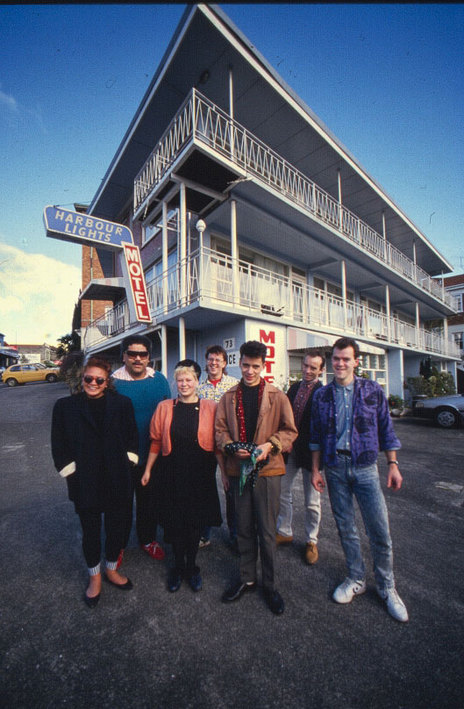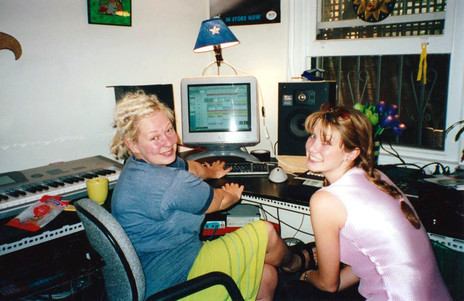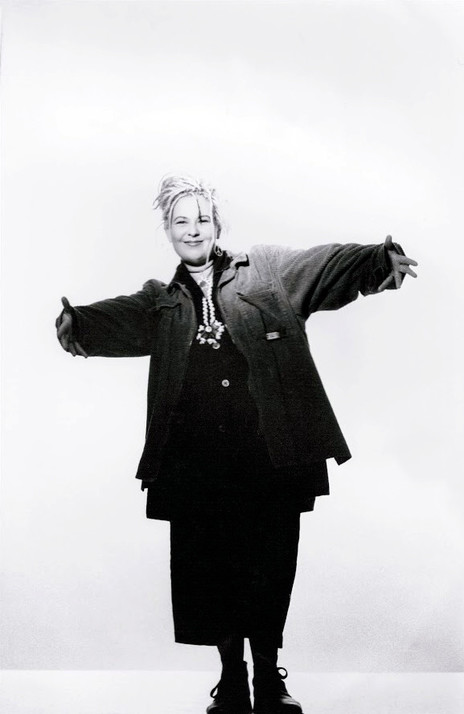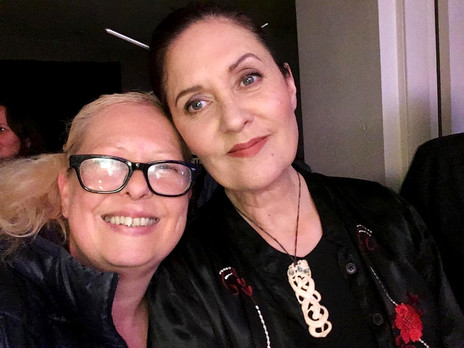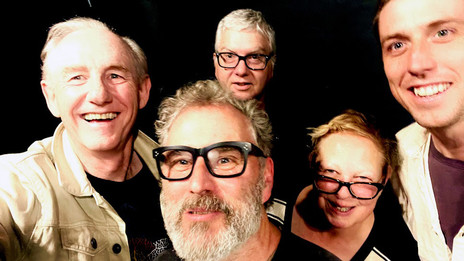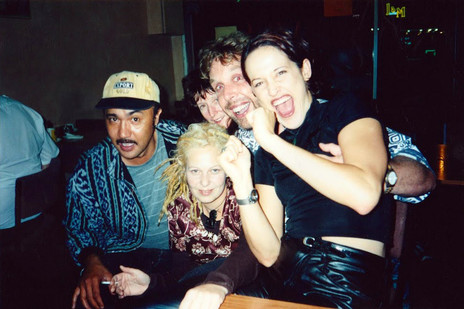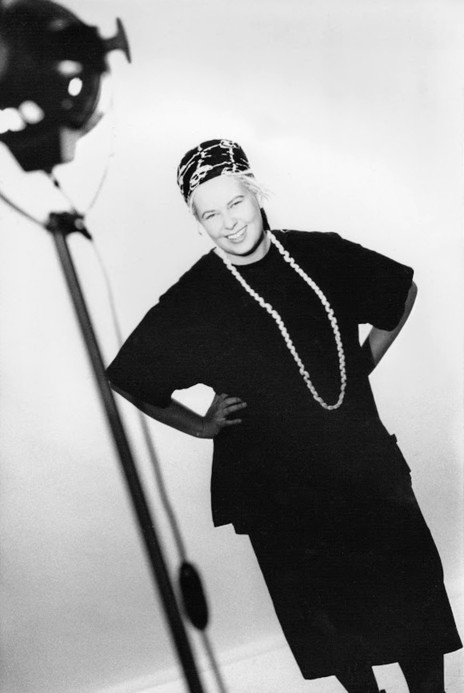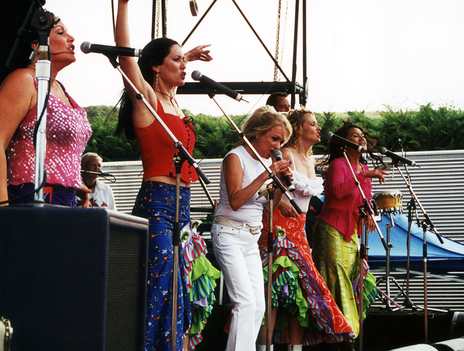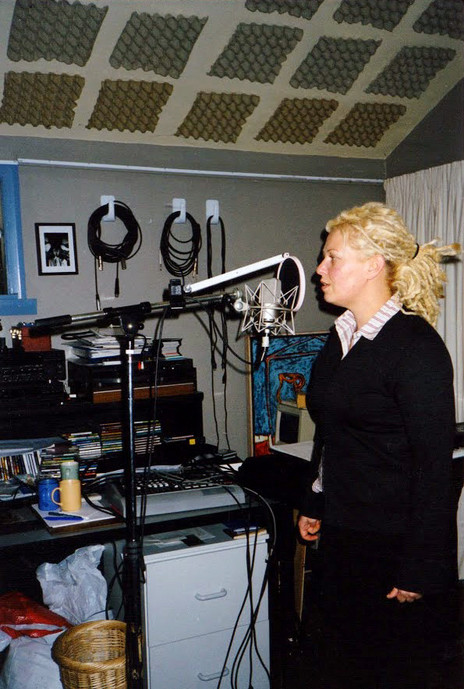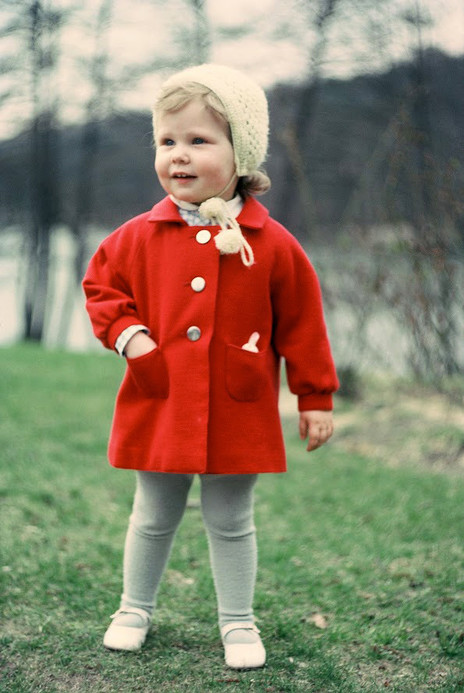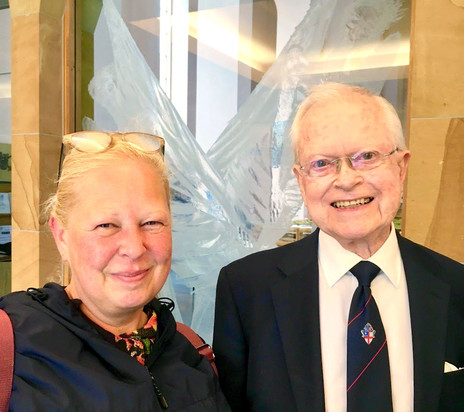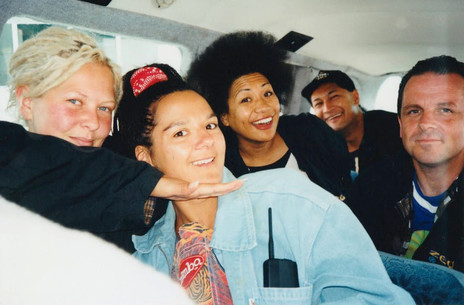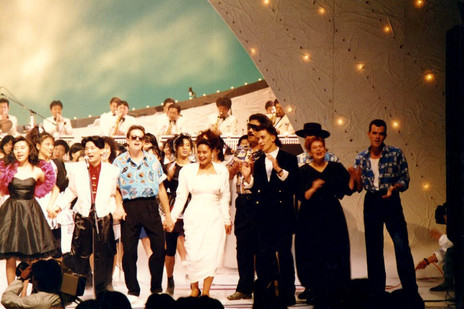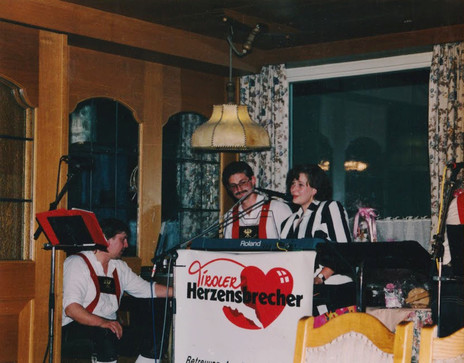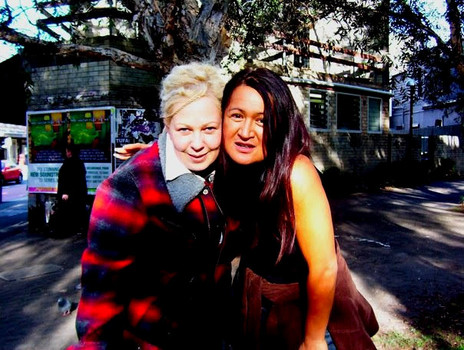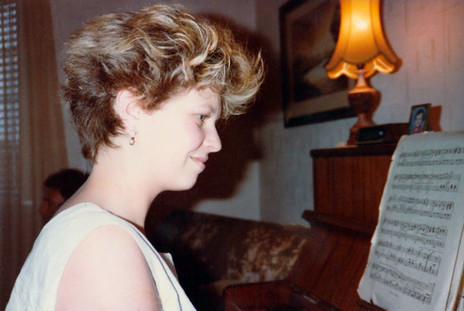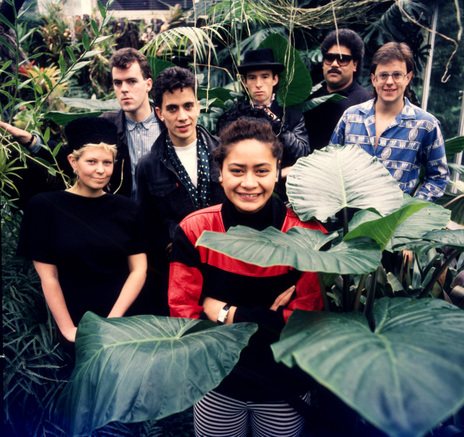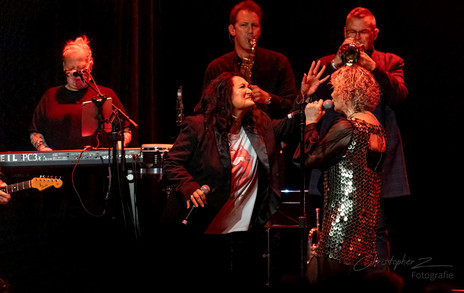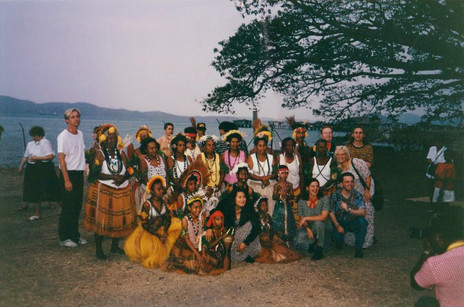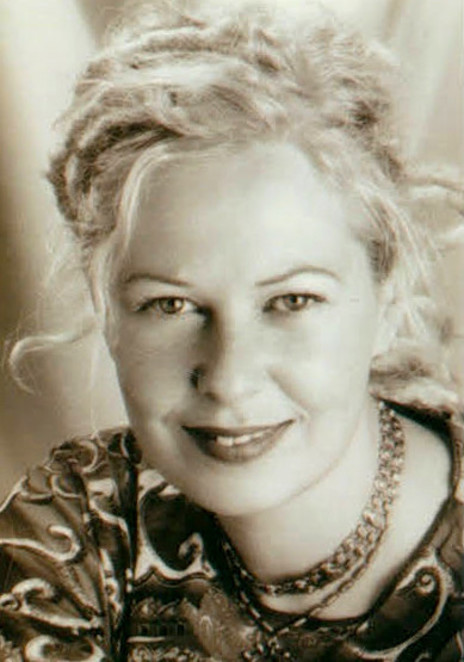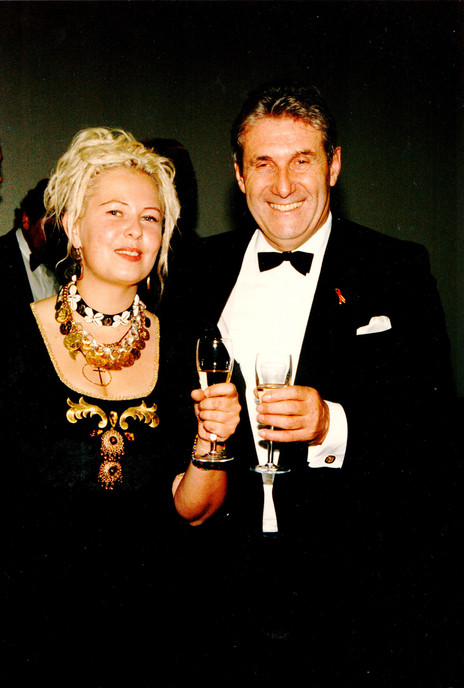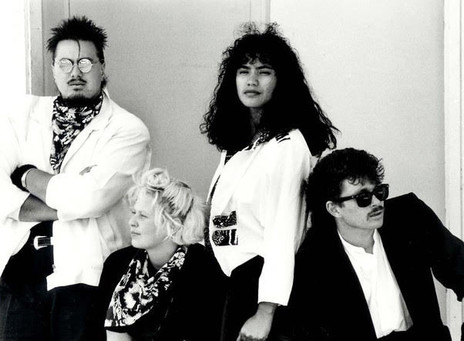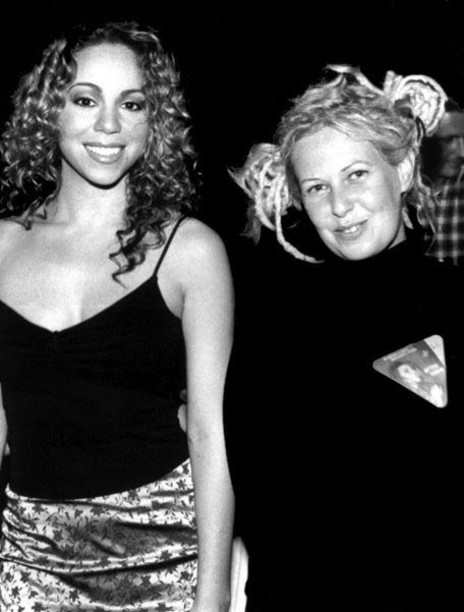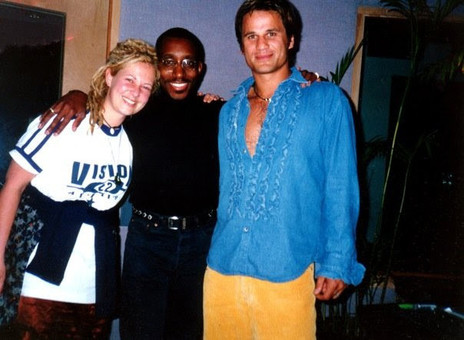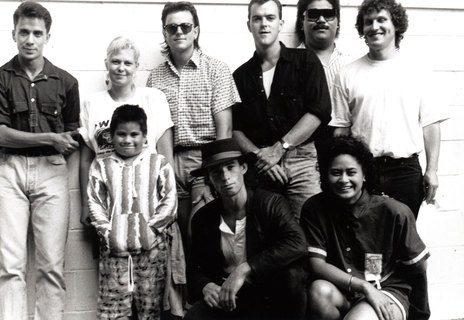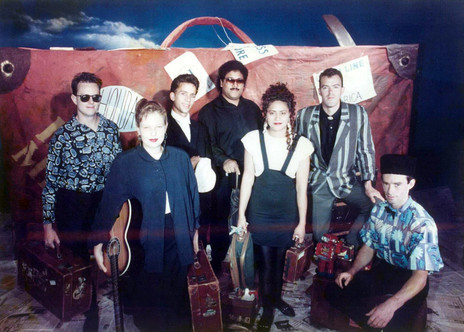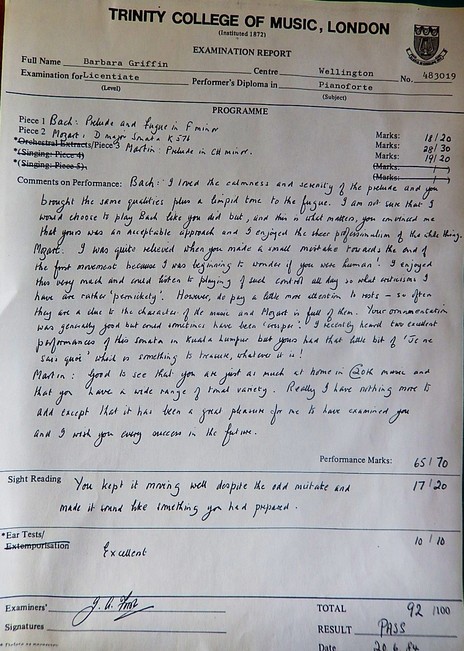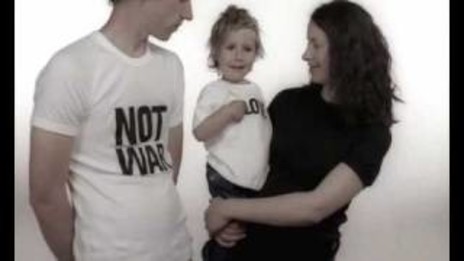Always busy, “Barbs” still pops back across the Tasman. She toured with When The Cat’s Away in 2024 on keyboards and backing vocals, and joined the Netherworld Dancing Toys’ one-off reunion playing ‘For Today’ at the 2018 APRA Silver Scroll Awards in Auckland.
From Germany with a Steinway
Born in Germany, Barbara arrived in New Zealand aged two with her Kiwi father and German mother and grew up fluent in both languages. It was a musical household. “It wasn’t until later on I realised it was unusual to have a baby grand piano in the house,” she says. The piano in question was a 1936 Steinway her parents received as a wedding present and had shipped out with the family. “I’ve still got it, it’s indestructible.”
Her father, an accountant, was a jazz fan and played piano, having learnt from renowned Wellington teacher and performer Bob Barcham. Both her parents were also classical fans “with typical 1950s German musical tastes like Bach, I think I was indoctrinated with Bach in the womb.” JS Bach’s “almost intellectual, not overly theatrical approach” remains her touchstone. “He’s my grid, the opposite of the romantics, I really do think it’s the perfection of music on earth.”
When asked about her earliest musical memories, Barbara says she used to wake her parents singing in her cot as a toddler. As she got older she loved singing in the church choir with her mother, being exposed to harmony and counterpoint in the process. Skills that would come in handy later on. Her parents were supportive, and Barbara started piano lessons early, showing precocious talent and easily sailing through her Trinity College diplomas ATCL and LTCL.
She won a scholarship to Wellington’s Erskine College where she excelled academically. In 1983, following a year in Germany studying piano and organ in Frankfurt, she enrolled in Victoria University’s School of Music. But despite getting an A in both piano and composition, music academia wasn’t her thing, and after a year she pulled out to try the city’s fledgling jazz school. But the strictures of the musical classroom didn’t appeal. Barbs just wanted to get out and play. Which is exactly what she did.
From jazz to Holidaymakers
Around this time she met Steve Roche (later of Six Volts) and they formed a jazz band “for what seemed like about five minutes” playing a range of material including Horace Silver and Dave Brubeck. This led on to Barbara’s own jazz trio with James Gilberd on drums and Roger Ward on double bass. They played at the university and at inner-city venue The Oaks. It was at an Oaks gig that she met John McDougall, formerly guitarist with Wellington bands The Rodents and The Hulamen. That conversation led to her joining the newly formed Holidaymakers.
The band included McDougall along with three other Onslow College old boys: Richard Caigou (drums), ex-Rodents and Hulamen Peter Marshall (vocals), and Andrew “Clyde” Clouston (saxophone), later of Chicago Smoke Shop and DD Smash fame. The “Newtown-Samoan contingent”, as Barbara fondly describes them, were Pati “Albert” Umaga (bass) and Mara Finau (vocals), often joined by Mara’s sisters Leti and Leva. “Peter is half-Samoan too, so that was quite a thing in the band,” she says. Stephen Jessup (ex-Rough Justice) completed the lineup, bringing his immaculate Stratocaster licks to the party. Holidaymakers were a real family of a band. It was obvious to all that they were thick as thieves.
Holidaymakers played weekly at The Oaks drawing capacity houses. Beer-fuelled Friday nights were hot, sweaty celebrations. The growing wave of support for the band eventually led to the recording (with Nigel Stone at Marmalade Studios) and release of ‘Sweet Lovers’, an inspired New Zealand/ Pacifica reinterpretation of a little-known Bill Withers song on Trevor Reekie’s Pagan Records. It was No.1 for six weeks and stayed in the charts for 22 weeks, with Barbara’s sweet harmony vocals supporting lead vocalists Peter Marshall and Mara Finau.
Holidaymakers scooped the 1988 New Zealand Music Awards, winning single of the year, most promising male vocalist (Peter Marshall), most promising female vocalist (Mara Finau), most promising group, and best video (directed by Fane Flaws and produced by Brian Kassler (“Making that video was amazing, all these legends in the film industry gave their time and expertise for free” says Barbara). Also, Nigel Stone won best producer and best engineer.
Later in 1988 ‘Waiting in the Sunshine’, the follow-up single co-written by Barbara, reached No.6 and stayed on the chart for six weeks.
Making ads
While this was happening Barbara started making a living as a musician when “studio life beckoned”. She also met Nigel Stone. As far as musically talented couples go, they were a force to be reckoned with.
Barbara worked as a session musician for several years, working between Marmalade (often with top session writers like Rob Winch and Julie Collier) and Soundtrax (with Jim Hall, Ian Morris, and Callie Blood) which were literally next door to each other on the eighth floor of an innocuous looking building in Wellington’s Victoria Street. She also did sessions for Randall Brandon and John O’Connor’s WAMO Studios.
In the late 1980s there were lots of big-budget ads being made – soundtracks for multi-million-dollar TV and radio campaigns. “There would be a brief at 9am, and the client would be in at lunchtime to hear the track.” With big budgets came big expectations and some clients and agency folk were pretty brutal. As Barbara says, she “learnt to write and arrange on the fly, often to picture.” But she could deliver and enjoyed doing so. She was typically involved in recording two to four ads a week. While the pressure was intense, “the money was good!”
Along the way she worked alongside many of the country’s top singers – Jackie Clarke, Gina Stevens, Margaret Urlich, Callie Blood and Annie Crummer among them. “I cried the first time I heard Annie sing, I was so moved,” she says.
Touring, writing and recording
During this period Barbara also toured and recorded with Holidaymakers, When the Cat’s Away, Ardijah and Netherworld Dancing Toys.
“I loved playing with Ardijah and it was a culture-shock in the most amazing way for a girl from Wellington staying with Ryan and Betty in Ōtara. We would do blocks of rehearsals and then gig for a couple of weeks. They taught me the local delicacy of mixing Milk Arrowroot biscuits into a hot cuppa!”
With the turn of the decade Barbara moved to Auckland where she continued session work, but to a lesser degree: “There were just so many great singers around.” Before long she was gigging in The Space Cadets, a covers band including some of the top players in town – Darren Ormsby (bass), Lance Su’a (guitar), Gary Verberne (guitar), and Paul Ewing (Hot Ash) and Wayne Bell (drums). Barbara played keys and shared lead vocals and banter with Stacey Edwards. On a typical night the band would play The Rock Garden from 6pm-9pm and then the No.7 Bar in Parnell from 10pm-2am.
She also joined forces with Annie Crummer and producer Nigel Stone helping play keys and sing backing vocals on Crummer’s 1992 album Language. Later she co-wrote eight songs with Annie for her second album Seventh Wave. “Annie had been given all these demo songs by the record company and called me saying ‘help, I don’t like most of them’. I agreed and said, let’s write some of our own. So we did!”
Australia and LA
In 1994 Jesus Christ Superstar came to town and to Barbara’s surprise it changed everything. She wasn’t interested initially, but when the other Space Cadets auditioned she joined them. Margaret Urlich played Mary Magdalene and the hugely successful show toured the main centres before going to Australia, where Barbara stayed on.
With days free before showtime she began writing with Jon Stevens. “I vividly remember spending days in an Adelaide motel working on songs with Jon. This was pre Mac and Logic, so we were using an old MC500 Roland for sequencing and a Roland hard disk recorder for vocals.”
Barbara was helping Stevens write demos for an album to be recorded in LA with Randy Jackson, then senior vice-president of A&R at Columbia Records. She went to LA for the project and stayed for a year. Jackson took a shine to Barbara – “Barb, we gotta get you hooked up!” – and she started meeting a who’s who of people in the industry. Before long there were publishing deals on offer from the likes of Sony, Mushroom and BMG.
After taking much-needed legal advice from well-known music lawyer Shane Simpson, she signed a deal with Sony/ATV Music Publishing as a writer/producer. (A publishing deal is for songwriting and selling songs, as opposed to a record deal which is for recording and releasing an artist’s music.) It turned out to be a great success. Following her move back to Sydney where she continued writing – “pretty much nine-to-five” – she had songs placed in high profile movies, childrens’ TV shows and saw a couple hit the Australian and French charts. Sync placements of her songs quickly paid back Barbara’s publishing deal advance and she signed a second deal, recouping that too. That doesn’t always happen.
In 2002 Annie Crummer included the previously unreleased ‘Love Not War’ - a collaboration between Barbara and US songwriter Tom Snow - on her compilation Shine. The song was also recorded by Joe Cocker, and appeared on his 2002 album Respect Yourself.
Life remained busy. Barbara found herself in demand, writing, producing and touring. She worked with Alex Lloyd (“he reminded me of an Australian Peter Gabriel”), Shane Nicholson, Jenny Morris, Christine Anu and Amiel, to name a few. In 2004 she received an Australian Guild of Screen Composers award for a track she composed for Qantas.
Time for a change
At the age of 40 Barbara decided she’d had enough of touring. “I’d just moved on from spending time travelling with (mostly) men whose idea of a good time was not necessarily ideologically aligned with mine,” she says diplomatically. She also had some major life things happen. Both her beloved parents died and a long-term relationship ended. It was time for a change.
Step in Margaret Urlich. “I reconnected with Margaret and I tree-changed to the country.” Margaret was teaching singing in schools across the Bundanoon South Highlands 150kms south of Sydney, a region Barbara describes as comparable to Matakana in relation to Auckland. Margaret helped Barbara get onto the same teaching circuit. She also started teaching singing and piano privately, using the indestructible Steinway baby grand she inherited from her parents.
“I’ve loved this stage of my career,” she says. “I teach kids from kindergarten age through to year 12, as well as adults. It’s a lot of fun and I enjoy the local community side of it. These days kids want to learn songs by Billie Eilish and Taylor Swift, not just classical and scales.” She is also musical director for various school musicals and regularly sits in playing keyboards on the shows.
With the death of her parents Barbara also “went back to church”, as she puts it. Quite literally, spending a number of years as director of music at Goulburn Anglican Cathedral of St Saviour, a role she says helped her grow a lot musically.
From Elliott Smith to Finding Nemo Jr
Barbara’s musical journey has been and long and interesting, and she’s obviously very happy with her work and lifestyle these days. I ask her what music, other than Bach, most resonates with her now.
“Ron Sexsmith is right up there for me. I’m not sure when I discovered him, but he’s ‘Foolproof’! And I’ve always loved Elliott Smith. It was so depressing when he committed suicide. Through Randy I was actually asked to audition for his band in LA just before I left, but I didn’t think LA was a great place to live and I wanted to get back to Sydney. I do wonder if I had joined the band and become friends with him whether I could have helped in some way.”
Our chat ends at this point as Barbs was heading out the door to run a final dress rehearsal for the latest show she is musical director for, Disney’s Finding Nemo Jr. It will undoubtedly be a great success: Barbara Griffin, her incredible musical skills, her beaming smile, and 40 lucky kids.
